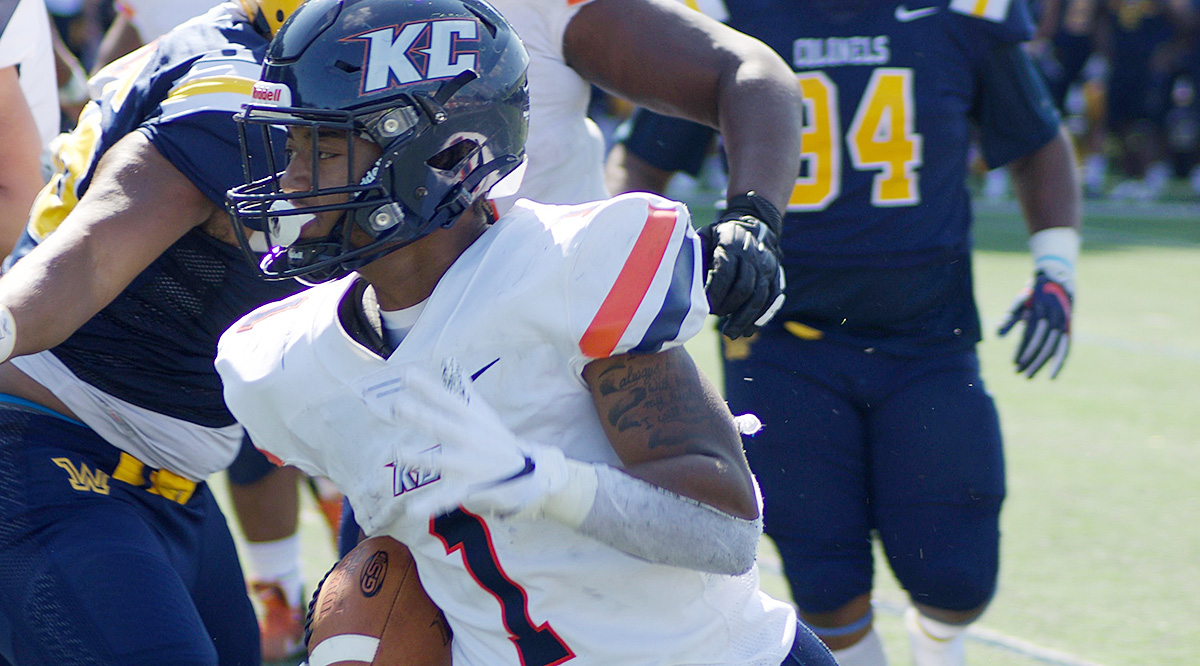
|
| Keystone is one of more than 30 schools which have added football in the nearly quarter-century since automatic bids were implemented across a wide range of NCAA Division III sports. Keystone athletics photo |
By Pat Coleman
D3sports.com
Headed into the 1999-2000 academic calendar, NCAA Division III made sweeping changes to the way postseason championship tournament bids are handed out, extending automatic qualification status to essentially any group of seven schools offering a sport, and democratizing playoff access across NCAA Division III.
Prior to the fall of 1999, automatic bids (also known as automatic qualifiers or AQs) were handed out on a sport-by-sport basis. Some sports had none, some gave bids to a select few, and across the board, all bids were selected on a regional basis, with a set number going to each of four or eight regions. In a significant vote of solidarity, however, the stronger conferences voted to share championship access with all conferences in Division III, meaning the Wisconsin Intercollegiate Athletic Conference and the New Jersey Athletic Conference would have the same ability to earn one automatic bid as the winner of the St. Louis Intercollegiate Athletic Conference or the Skyline Conference.
The standard for that automatic bid access was seven teams. Any group of seven schools offering a sport would qualify.
Over the intervening 23 years, the Division III landscape has changed significantly. D-III grew larger, with more and more schools wanting to enter. And independents, schools without conferences, have almost entirely disappeared. For example, in 1999, 16 schools competed as independents in football, and in 2021, zero did. Conferences have been created in that time -- the Landmark, the Atlantic East, the New England Collegiate Conference, the Southern Athletic Association -- adding more and more leagues to earn automatic bids. The New England Football Conference split into two when it was at 16, allowing its members to compete for two separate automatic bids instead of one.
Those splits and rearrangements of conferences to maximize the taking of automatic bids will get even easier going forward, as the standard for doing so has been cut from seven schools to six.
This change to the standard was voted on Jan. 22, at the 2022 NCAA convention, and was adopted by a margin of 281-167 with two abstentions. A similar proposals to allow conferences sponsoring just one sport to do the same was approved by a wider margin, 327-123-3. It was one of a number of proposals voted on at the convention.
This change should benefit sports such as golf and tennis, perhaps field hockey, ice hockey and baseball. But it will make it even more difficult for football schools to get at-large bids. There are already 27 automatic bids in football for a 32-team field which is locked at a maximum of 32 teams by rule. Lowering the standard in football could quickly result in 28 or 29 automatic bids making up that field, as soon as 2022 or 2023, leaving even fewer at-large bids.
The Division III membmership overwhelmingly approved changes to football practices and limited days with full contact in practice in a three-prong package that affected the preseason, regular season, and spring football. The adopted proposal limits football teams to two practices in full pads per week during the regular season, or three practices in a week where a team is not playing a game. This was supported by the American Football Coaches Association.
Preseason practice changed as well, setting a maximum of eight practices in full pads and no more than two days in a row of full contact during the season. Contact cannot occur for more than 75 minutes per day. And in the spring, players would be allowed to wear helmets for all of the maximum 16 days where spring practice is permitted. On four of those days, players could also wear shoulder pads and take part in tackling and blocking drills. This passed 295-68-87.
A proposal to bring back redshirting, which was removed in the early 2000's, was narrowly tabled and sent back for additional discussion and discovery.
More analysis and discussion:
Dissussing the fooball ramifications of the NCAA vote on padded practices and six-team automatic bids: https://t.co/Ynnxe1aRxX #d3fb
— D3football.com (@d3football) January 22, 2022
We just got done with our 1st Twitter #Spaces talking the decision by #NCAAD3 membership to lower the number for conference Automatic Qualifiers from 7 to 6 in all sports. We talked about the ramifications … https://t.co/IqNXsHHbCA #d3hoops #d3fb #d3soccer #d3baseball #NcAAConv
— Hoopsville/McHugh (@d3hoopsville) January 22, 2022